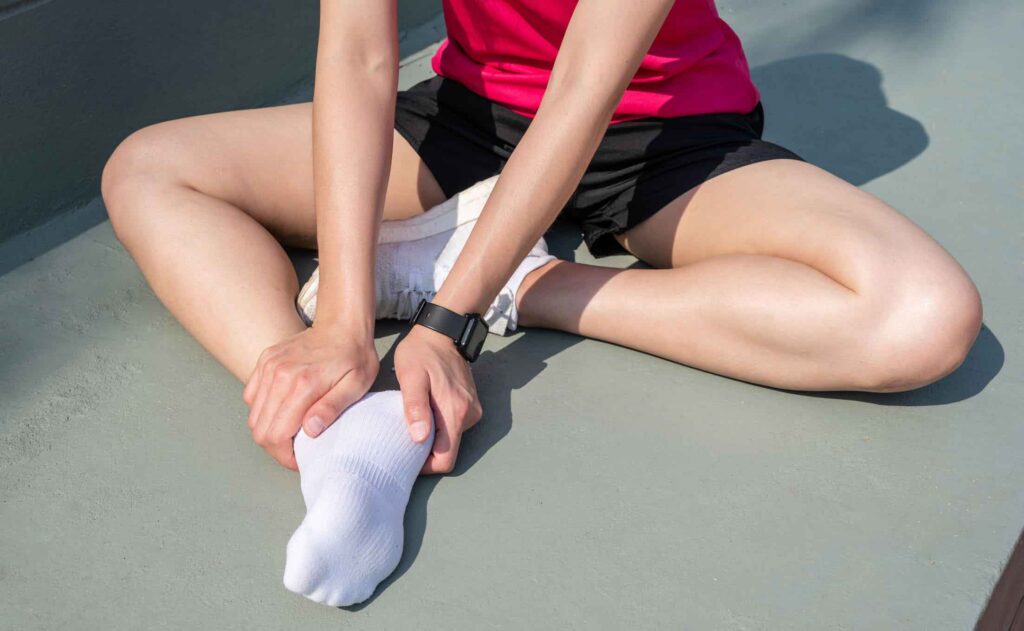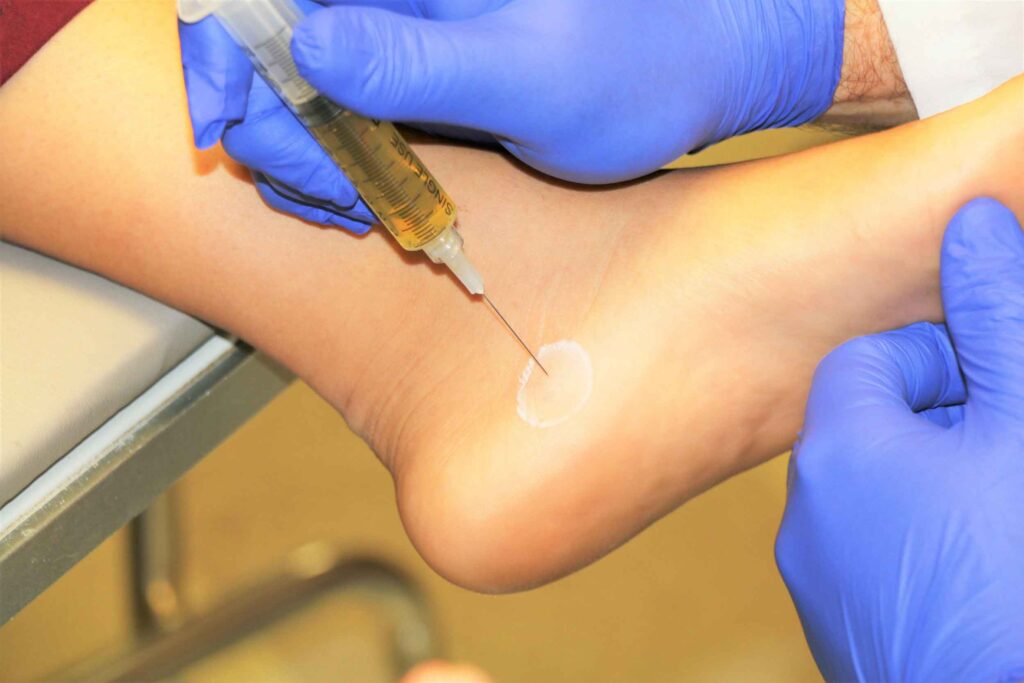If you have extreme pain in or near your heels, you may have a condition called plantar fasciitis. Almost one in ten people may develop this problem at some point in their life. About ten per cent of the population suffers from this condition at some point in their lives. If so, you know that PRP for plantar fasciitis is one of the most effective treatments which has come up in recent times.
Conventional treatments for heel pain, including corticosteroids and analgesics, provide only temporary relief, but we now rely on PRP (platelet-rich plasma) for plantar fasciitis. It can repair and heal inflamed and damaged tissue as a long-term treatment.

PLANTAR FASCIITIS AND ITS SYMPTOMS
The plantar fascia is a tough band of tissue (fascia) that joins your heel bone with the base of your toes. You can walk normally as long as you are flexible and normal. The fabric supports tension by stretching the leg muscles while also supporting the arch of the foot. However, when this tissue becomes inflamed, it becomes painful and difficult to move. Plantar fasciitis can manifest in many ways. For example, you may wake up in the morning with a sharp pain in the bottom of your foot. Or perhaps if you’ve been standing on a hard surface for too long.
Many patients tend to ignore the problem and seem to get better with some rest or a short walk in the morning. However, doctors recommend getting appropriate treatment, such as platelet-rich plasma (PRP), for plantar fasciitis. Otherwise, you risk developing back, knee, foot, or hip problems.

WHY IS PRP INJECTION A GOOD OPTION FOR PLANTAR FASCIITIS?
Platelet-rich plasma treatment for plantar fasciitis allows recovery by bringing all the essential elements to the area. In order for the tissue to heal, it needs to be infused with blood. This provides oxygen and other platelets and healing agents to create new tissue. However, research conducted at the National Center for Biotechnology Information shows that the stubborn plantar fascia has few blood vessels and therefore a poor blood supply.
Moreover, this band of tissue does not receive the necessary number of fresh cells to repair the broken fibres. PRP not only cleans the tissue with platelets, but it also signals to the body that the area needs to heal. Additionally, dense and alpha granules surround the tissue with new collagen fibres for rapid healing.
Generally, patients show a positive effect after 2-4 weeks and better pain relief after 24 weeks. This is because, unlike other treatment options that numb the pain, PRP therapy stimulates the natural healing process. As a result, you will find that the positive effects appear slowly but last longer.
Have you ever experienced heel pain like plantar fasciitis? A good option is to contact an experienced doctor to identify the problem. It’s a good idea to get the treatment you need before the problem gets worse and the tissue tears.
Visit Specialty Care Clinics for quality pain management, call us now (469) 545-9983.
